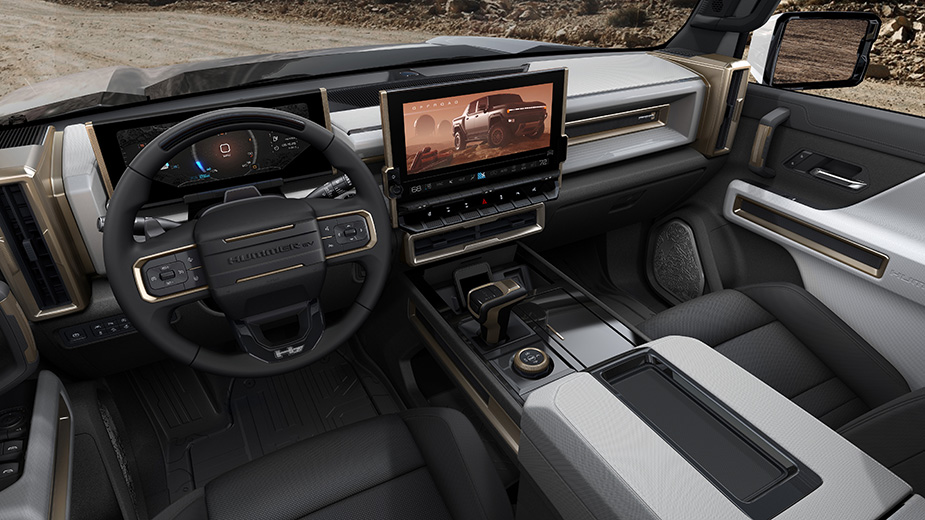YOUNGSTOWN, Ohio – An hour-long documentary presented by General Motors Co. explores just what it takes for a major legacy automaker to shift gears into the future.
The film, “Revolution: GMC Hummer EV,” chronicles the odyssey of the GMC Hummer EV – the first electric-vehicle produced on GM’s Ultium platform – from its initial concept two years ago to its launch in December 2021.
Simultaneously, the company had to retrofit its Detroit-Hamtramck manufacturing plant to what is today Factory Zero, so named for the zero-emissions vehicles in production there, beginning with the Hummer EV.
GM’s top executives, engineers, design and architecture teams, plant managers and test drivers are interviewed throughout the documentary, commenting on the successes and challenges of completely reimagining the Hummer, a once-popular truck that was discontinued in 2010.
“Our goal was to upend what an electric vehicle is capable of and push the boundaries from 100 years of vehicle development experience,” Josh Tavel, executive chief engineer, says. “This documentary captures the soul of a team capable of incredible innovation and resilience. Their learnings are laying the foundation of vehicle development for decades to come.”
The documentary, produced by Detroit-based WTP Pictures and Hiatus, premiered on the History Channel March 27 and can now be accessed on GMC’s YouTube channel. Film crews were afforded access that gives viewers a behind-the-scenes look of how the Hummer was designed and built, while managers and contractors scrambled to reconfigure the Detroit-Hamtramck facility to accommodate EV production.
In the film, Tavel attributes the idea of reviving the Hummer as an EV to GM President Mark Reuss. “Once that idea kind of came out, the thing got traction, like crazy fast.”
Reuss says in the film that GM’s earlier forays into the EV market concentrated on smaller passenger vehicles and not trucks.
“We wanted to make a big statement – to bring back sort of the antithesis of what an internal combustion Hummer was,” he says. “It sort of blew everybody’s mind when we [said] what it was going to be and what it was going to be able to do.”
In just more than two years, team members were able to recreate the Hummer from scratch, and the film captures the creativity and drive of engineers, architects and others responsible for meeting that tight deadline.
Viewers sit in on team meetings that discuss the frustrations and challenges during frigid winter testing in Michigan’s Upper Peninsula and testing the Hummer’s off-road prowess in the rugged terrain of Moab, Utah. And they look over shoulders of architects’ drawing boards at the GM Design building at the Global Technical Center in Warren, Mich.
“There wasn’t any architecture that we had in our portfolio that could really do this job,” Rich Scheer, Hummer EV’s director of design, says in the film. “So that meant it was going to be a clean sheet of paper. We’re starting basically from nothing.”
Designing the headlamps, interior, and exterior aesthetics all had to occur in a compressed time frame.
“We knew we had this intense deadline,” says Cathy Glowicki, senior program manager, GMC Hummer EV. “It was one of those challenges where we had to be creative and think different. If we don’t learn and change, we won’t be here. Our future depends on us figuring some of this out.”
The first commercial Hummer EV rolled out of Factory Zero on Dec. 7, 2021.Reuss says the Hummer team broke many of the old rules associated with the automotive world, setting GM on a new course for its future.
“They took no prisoners on getting that done,” he says. “The Hummer EV transforms our electric future to zero crashes, zero congestion and zero emissions. The speed in which we did it is faster than anyone else.”
EDITOR’S NOTE: This series is produced in conjunction with Sweeney, with editorial control maintained by The Business Journal. Additional content is posted at BusinessJournalDaily.com/on-the-road-to-evs.
Pictured: GM describes the cabin design as geometric and textured with newly developed surface materials that contribute to the rugged look of the vehicle.
